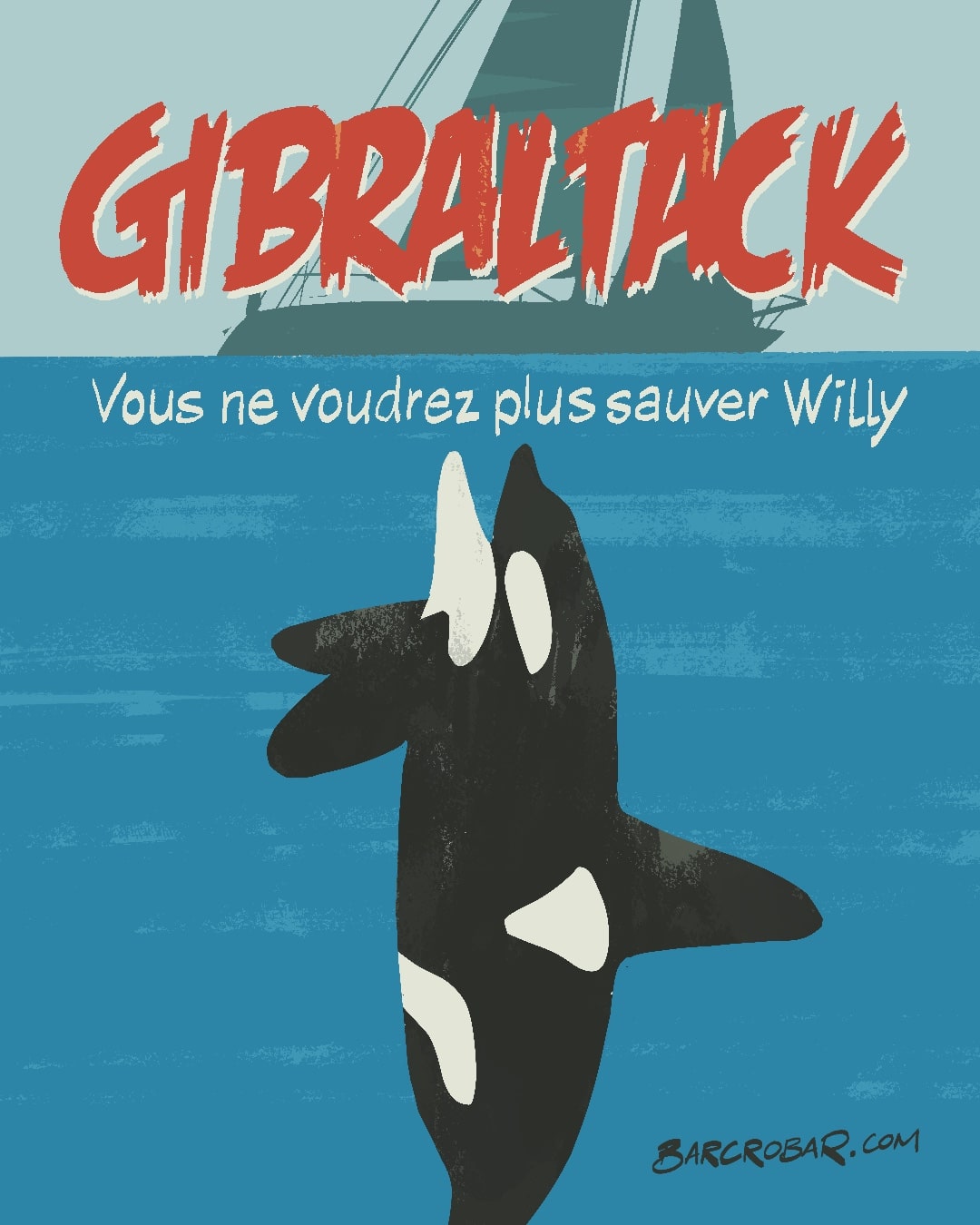Killer whale attacks on sailing boats off the coast of Spain have been on the increase for the past three years. Between 2020 and 2022, their number reached almost 500, according to the Atlantic Killer Whale Working Group. A phenomenon that is raising questions among scientists and the authorities.
"They went straight for the radar. They didn't circle the boat or try to play games... nothing! They came straight at the radar at full speed", Friedrich Sommer, the German owner of the "Muffet", a sailing boat damaged by an orca attack, told AFP.
He is not the only one waiting in Barbate, a small town on the Atlantic coast of Andalusia (southern Spain), for his boat to be repaired. "This one has completely lost its rudder" and the orcas have done "structural damage to the hull", explains Rafael Pecci, in charge of repairs, referring to a yacht belonging to another foreigner.
From the main beach, you can see the mast of a boat that sank at the beginning of May after an attack by these cetaceans, which can grow up to nine metres long for males and seven for females, weighing between 3.5 and 6 tonnes.
28 "interactions
These "interactions", the term used by specialists and the authorities to describe these attacks, began in 2020 off the Atlantic coast of the Iberian Peninsula, particularly between Cadiz and Tangiers (Morocco). This is due to the increased presence in this area near the Strait of Gibraltar of one of the killer whales' favourite prey species: bluefin tuna, which come from the Atlantic in spring to spawn in the Mediterranean.
According to the Spanish sea rescue organisation Salvamento Marítimo, 28 "interactions" have already taken place in 2023. Between 2020 and 2022, the number reached almost 500, according to the Atlantic Killer Whale Working Group (GTOA).
Several hypotheses
"We know very little about the causes of these interactions," José Luis García Varas, head of the World Wildlife Fund's (WWF) oceans programme in Spain, told AFP. There is no shortage of legends in the region, and one killer whale has quickly become the emblem of the phenomenon: Gladis Lamari, the matriarch of a clan to whom numerous attacks are attributed, is said to have taught her calves to attack sailing boats.
Orcas "form families, groups, they are very intelligent and there is a kind of oral transmission of knowledge between them", stresses José Luis García Varas.
Renaud de Stephanis, a doctor in marine sciences and president of the Circe organisation (Conservation, Information et Etude des Cétacés), believes that there are "several hypotheses" that could explain these attacks. While some explain this behaviour by a certain "animosity" felt by the orcas towards sailboats and other boats, others see it as simple "games". At the moment, "we don't have a definitive explanation", he stresses.
Text by RTS.ch ats/fgn

